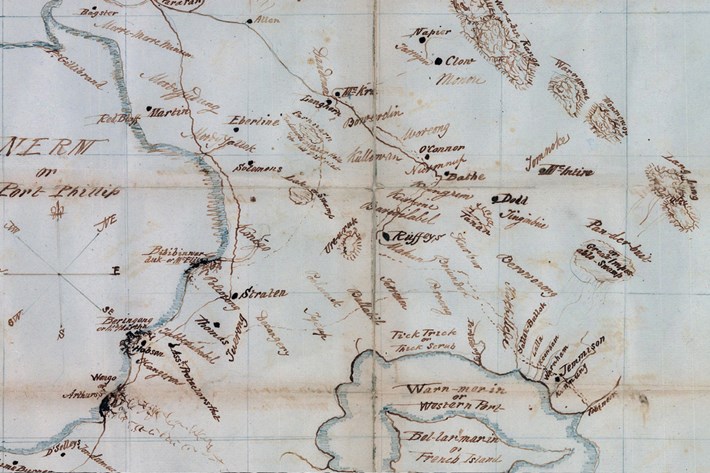First Peoples local history and culture

William Thomas’ map of 1840 showing Nerre nerre minum or South Melbourne.Journey to Westernport. PROV, VPRS 11 Unregistered inward correspondence to the Chief Protector of Aborigines, Reports and Returns & VPRS 4410 Aboriginal Protectorate Weekly, Monthly and Annual Reports and Journals, reproduced with the permission of the Keeper of the Public Records, Public Record Office Victoria, Australia
Council respectfully acknowledges the Traditional Owners of the Kulin Nations. We pay our respect to their Elders, both past, present. We acknowledge and uphold their continuing relationship to this land and waters.
Traditional Owners
Bunurong Land Council Aboriginal Corporation
Wurundjeri Woi Wurrung Cultural Heritage Aboriginal Corporation
Boonwurrung Land and Sea Council
Yalukit Willam: The River People of Port Phillip
Did you know that the site of the South Melbourne Town Hall was once a significant meeting place or Ngargee for the local people to conduct ceremony? Or that Albert Park Lake was once a wetland as diverse as Kakadu in the Northern Territory?
Yalukit Willam The River People of Port Phillip by local historian Meyer Eidelson contains a suburb by suburb account of historical events sourced from early records and the point of view of descendants and contemporaries of the Yalukut Weelam clan of the Boon Wurrung.
Local and state cultural institutions
Definitions
First Peoples or Nation
The term First Peoples, First Australians or First Nations are used as preferred terms on this website, after consultation with local stakeholders and in line with language used by Creative Victoria, rather than Aboriginal and Torres Strait Islander, Koorie and Indigenous Australians.